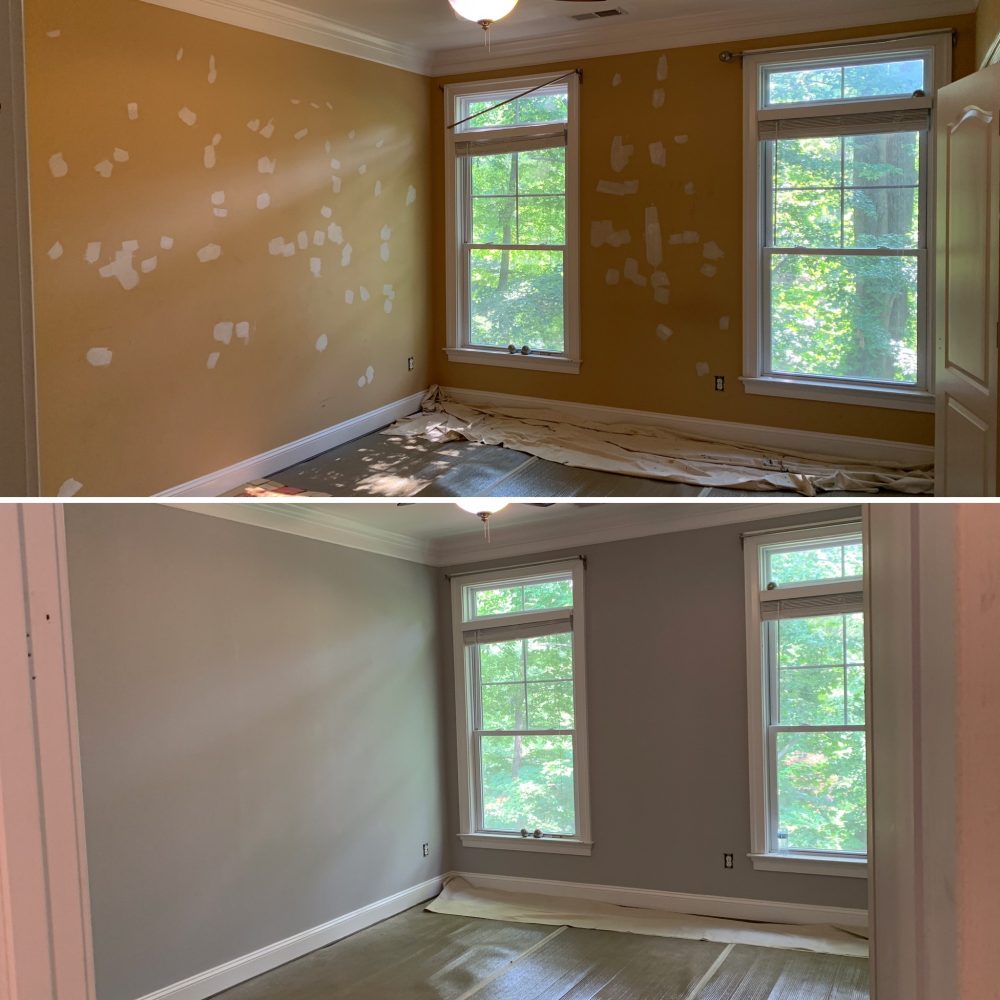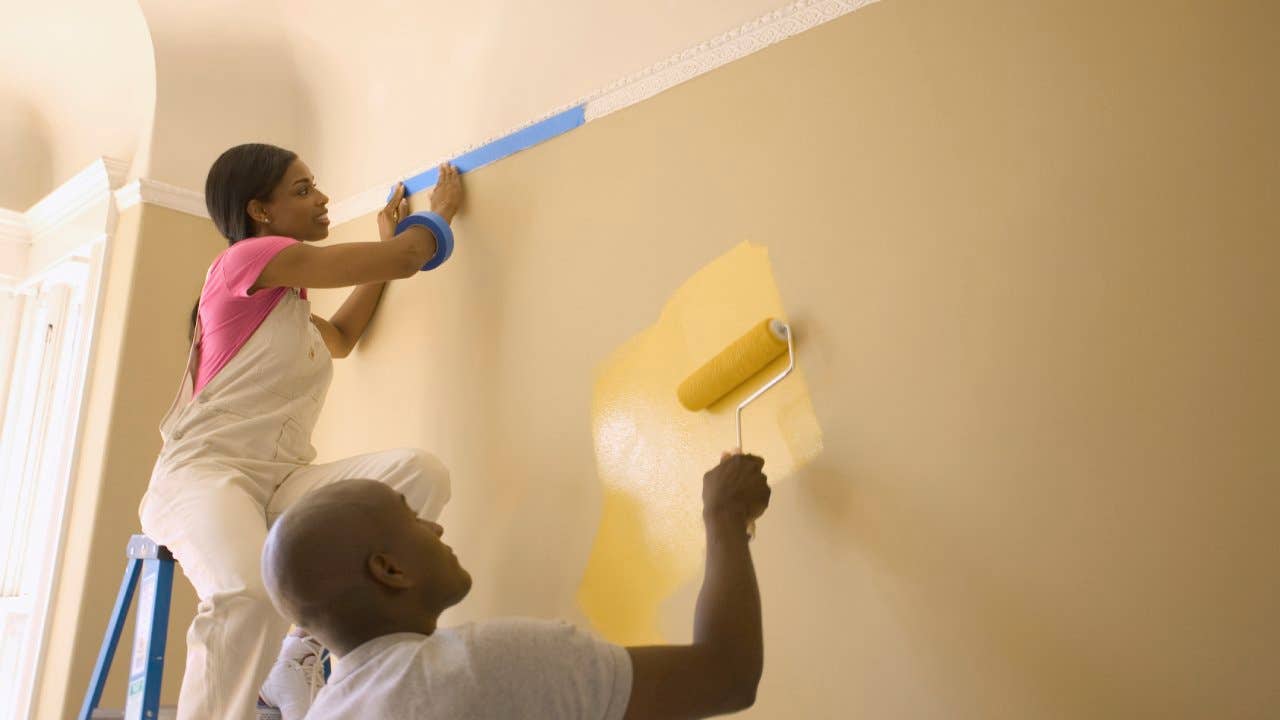Revitalize Your Space With Interior and Outside House Painting
Revitalizing your room via both interior and exterior house painting is a critical approach to improving your home's overall ambiance and market value. Understanding the long-lasting advantages of high quality paints goes beyond visual appeals; it includes factors to consider of resilience and upkeep.
Benefits of Residence Paint
Transforming a home's appearance via painting not just improves its aesthetic appeal however also gives considerable sensible advantages. A fresh coat of paint offers as a safety barrier versus environmental elements, such as dampness and UV rays, which can result in wear and tear gradually. This protective layer is particularly critical for outside surface areas that deal with the impact of the climate.
Additionally, interior painting can boost air high quality by using low-VOC or zero-VOC paints, which reduce dangerous discharges and advertise a healthier living environment. This is particularly beneficial for family members with children or people with respiratory problems.
Additionally, residence painting can enhance home worth. A well-maintained home with a contemporary shade palette draws in possible purchasers, making it a sound investment for house owners looking to offer. Routine paint also reflects a sense of treatment and interest to information, improving the general bankability of the residential property.
Finally, paint allows house owners to share their individual design and create a welcoming atmosphere. Whether upgrading outdated shades or refreshing discolored walls, paint can renew a room, making it feel brand-new and welcoming. On the whole, the advantages of residence paint are both aesthetic and functional, making it a necessary facet of home upkeep.

Picking the Right Colors
Selecting the right colors for both exterior and interior house paint is an important element of enhancing a home's aesthetic charm and value. Color options can drastically affect the understanding of area, mood, and building features. When thinking about outside colors, it is necessary to take into consideration the surrounding setting, area visual appeals, and any kind of homeowner association guidelines. Earthy tones, for example, can develop an unified blend with nature, while brighter shades may give a contemporary pop that sticks out.
For indoor spaces, colors ought to be selected based on the function of each space. Softer tones advertise harmony in bed rooms, while dynamic shades can invigorate living locations or playrooms. Florentina’s Painting LLC Interior Painting. Additionally, consider exactly how all-natural light engages with colors throughout the day; a color might show up different under varying lights problems
Additionally, it's useful to develop a natural color palette that moves throughout the home, linking different spaces while permitting for private expression in each room. Making use of shade important link examples and samples can aid in visualizing the last outcome, making certain that your options line up with your vision and enhance both the indoor and outside allure of your home.
Interior Painting Strategies
When it involves executing a successful indoor paint project, understanding various techniques is vital for accomplishing a sleek and professional finish. One essential method is the "cut-in" method, which entails using a brush to repaint sides and edges prior to rolling the wall surfaces. This creates clean lines and avoids roller marks.
One more effective method is using various roller snooze sizes. A much shorter snooze is perfect for smooth surfaces, while a much longer snooze can assist cover distinctive wall surfaces, guaranteeing an even application of paint. In addition, employing a "back-rolling" technique after splashing can help to evenly disperse paint and enhance attachment.
For more complex designs, methods such as stenciling or sponging can include depth and character to a room. These methods call for accuracy and practice however can yield stunning outcomes.

Finally, correct surface preparation-- including cleansing, fining sand, and priming-- is important to any kind of painting technique. This not only makes sure better paint adherence but likewise prolongs the life of the finish. By mastering these indoor paint strategies, home owners can change their rooms with confidence and creative thinking.
Exterior Paint Fundamentals
Effectively taking on an exterior paint job requires cautious planning and interest to information. The primary step is to choose top notch paint that is specifically developed for exterior usage, guaranteeing longevity versus the aspects. Think about the climate of your area, as different paints give differing degrees of moisture resistance, UV defense, and temperature adaptability.
Next, correct surface preparation is essential. Clean surfaces thoroughly to eliminate dirt, mold, and peeling paint. Fix any damages, such as splits or holes, to develop a smooth substratum for paint. Priming is usually recommended, especially for bare or previously unpainted surface sandblasting contractors areas, as it enhances attachment and enhances the paint's durability.
Picking the right devices is similarly crucial. Purchase high quality brushes, rollers, and sprayers to accomplish a specialist coating. Focus on the application strategy; functioning in convenient sections and applying even layers will certainly produce ideal results. Think about the timing of your task. Ideal problems include low humidity, modest temperatures, and minimal wind, which can impact drying times and paint adherence. By concentrating on these essentials, you can make sure an effective and aesthetically pleasing external painting job.

Maintenance Tips for Durability
Regular maintenance is vital for maintaining the durability and appearance of both exterior and interior paintwork. To ensure your paint lasts, start with routine evaluations. For outside surface areas, check for indicators of peeling, breaking, or fading, and address these issues quickly to avoid more damage. Clean surface areas frequently to eliminate dirt, mildew, and crud, utilizing a mild cleaning agent and why not find out more soft brush as needed.
For interior spaces, maintain a regular temperature level and moisture degree to reduce paint damage. Dust wall surfaces and walls periodically and take into consideration utilizing touch-up paints to cover small scuffs or scratches.
In addition, evaluate and keep caulking around doors and windows; replacing worn or fractured caulk will prevent dampness invasion, which can compromise paint high quality. When painting, pick high-grade paints that provide better durability and resistance to ecological variables, making sure a longer-lasting surface.
Conclusion
Finally, residence painting serves as a powerful tool for renewing both the interior and exterior of a home. The benefits expand beyond mere aesthetics, enhancing home worth and improving air quality with using quality products. Mindful consideration of shade option, together with the application of efficient methods, guarantees an effective makeover. Moreover, applying maintenance techniques can prolong the life of the paint, protecting the investment made in the revitalization process.